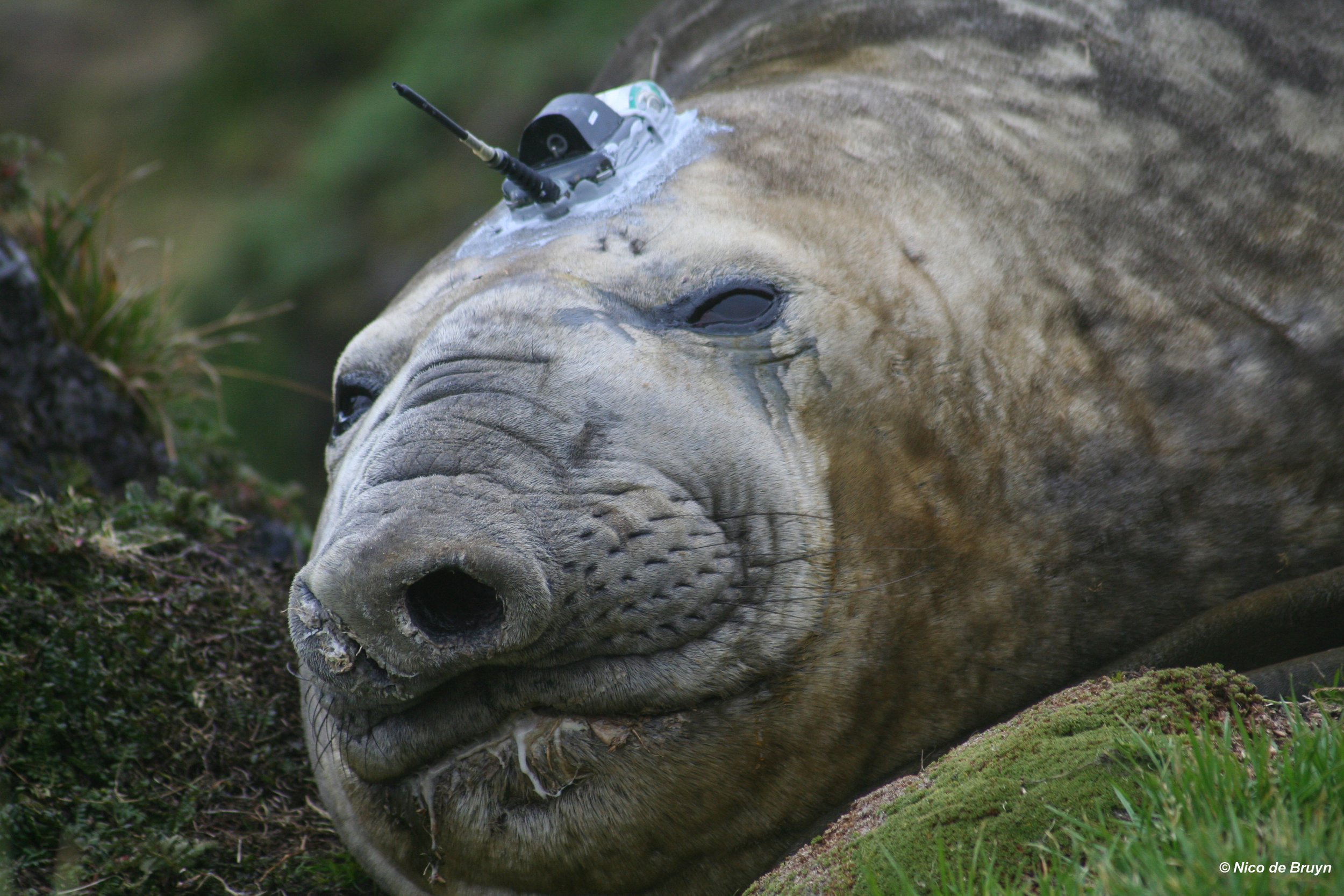In the news! New paper on the development of at-sea behaviour in male southern elephant seals at Marion Island
/The at-sea behaviour of southern elephant seals is largely influenced by their ontogeny, which refers to the development of a seal from one life stage to the next. As seals age and grow, they experience changes in their morphology and physiology, which influences their diving abilities and movement patterns.
In our latest article published in the Journal of Experimental Marine Biology and Ecology, we aimed to observe the at-sea diving behaviour of male southern elephant seals from Marion Island - an aspect not previously studied.
An adult male southern elephant seal at marion island, fitted with a satellite-linked time-depth-recording tracking device. photo: nico de bruyn
Between 2005 and 2011, satellite trackers were deployed on 23 different male southern elephant seals of various ages. Trackers recorded seals’ locations, dive durations, dive depths, surface durations and dive frequency. This allowed us to distinguish two behavioural modes; namely when seals were moving within a small area, and potentially foraging, and when seals were transiting between areas. We constructed models with this data which determined the influence of age class and behavioural mode on the diving behaviour of male southern elephant seals.
We found that juvenile seals travelled the furthest distances from Marion Island and were in transit mode for most of their dives. This behaviour was attributed to the younger seals’ less developed ability to locate food, and their smaller body size, leading to lower energy requirements. Juvenile seals also displayed shorter dives and reached shallower depths which was expected given their physiological limitations. Moreover, younger fatter seals are more buoyant and have limited oxygen reserves which limits how deep they can sink.
Fig. 1 from Lasch et al. 2022. (A) State-space modelled locations for 23 male southern elephant seals tracked from Marion Island between 2005 and 2011. (B) The average maximum distance travelled (km) by juvenile (n = 5), sub-adult (n = 8) and adult (n = 10) male elephant seals from Marion Island.
In contrast, sub-adult and adult seals stayed relatively closer to the island and spent most of their dives in searching mode. These older age classes also displayed longer and deeper dives and spent more time at the surface than younger seals. Sub-adult seals experience a secondary growth spurt, growing up to 10 times in size. This drastic growth increases their energy requirements and enhances their physiological capabilities, which enables them to exploit food patches for longer periods of time. Moreover, their longer surface durations are explained by their need to recover their oxygen supplies after long and deep dives.
Observed differences in the at-sea diving behaviour seem to reflect changing physiological abilities as seals mature. For male southern elephant seals, changes in physiological ability necessitate behavioural plasticity, which may be the key to survival and future breeding success.
To find out more, check out the full article HERE
Lasch KG, Tosh CA, Bester MN & de Bruyn PJN. 2022. The ontogeny of at-sea behaviour in male southern elephant seals (Mirounga leonina) at Marion Island. Journal of Experimental Marine Biology and Ecology (in press). https://doi.org/10.1016/j.jembe.2022.151833.


















